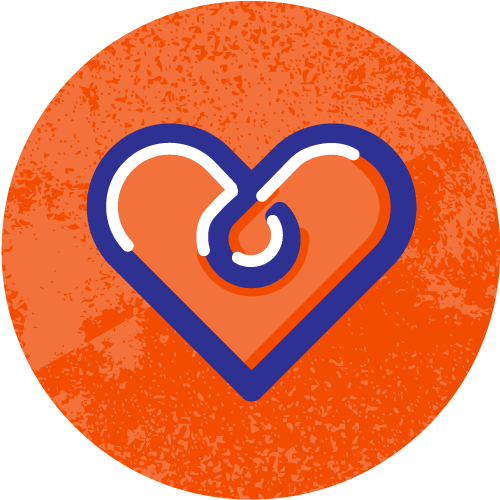Everyone is wondering: “When will the pandemic end, and when will the recovery start?”
No one knows the recovery timeline for sure—and it probably won’t be an immediate or smooth transition. The COVID-19 pandemic likely won’t “end” in a concrete way.
But I’ve identified a potential shortcut to help you estimate your agency’s unique recovery timeline, to help you make better decisions about the future.
Since agencies are a lagging indicator, this starts by predicting when your lost revenue might return—and that depends on when your clients’ customers start spending money.
Borrowing from economics, I’ve created a four-part Recovery Timeline Framework. The four parts are: Demand Destroyed vs. Demand Deferred vs. Demand Unchanged vs. Demand Created.
Let’s explore how this simple yet powerful framework could help you predict your agency’s recovery timeline from COVID-19. By no means is it perfect—but it might give you a “directional” answer about what’s to come.
Simple Math: Your Agency’s Revenue Depends on Your Clients’ Revenues
Your agency’s revenue doesn’t happen unless your clients see revenue (or at least expect revenue) themselves, from their customers.
How so? Consider the core relationships that drive your agency’s revenue. To over-simplify:
- Your agency gets revenue, because you have clients.
- You got (and keep) those clients because they think you’ll help them generate sales (or similar).
- Your clients generate sales by selling their products and services to B2B and/or B2C customers.
- Your clients’ customers buy the products and services to meet their needs.
- Those end-customers are less likely to spend money if they’re concerned about their economic future, or if the product or service isn’t relevant to them today.
This isn’t a direct linkage between consumer spending and agency revenue, even for B2C-oriented agencies—consumer revenue doesn’t flow directly to agencies, and it’s certainly not immediate. But the general relationship can help you predict roughly when your agency’s recovery might start (in terms of sooner vs. later).
With that in mind, we can consider four types of customer demand (related to COVID-19) in the Recovery Timeline Framework.
Recovery Timeline Framework: 4 Types of Customer Demand
First, how does “Destroyed vs. Deferred” work? With an eye toward retail sales, the New York Times elaborates:
“Economists often distinguish demand that is deferred because of a crisis from demand that is destroyed. Retail probably has some of each. Someone who needs a new dishwasher might put off the purchase but will probably buy one eventually. But an office worker who puts off a springtime wardrobe refresh might just skip a year, meaning those sales are simply lost.”
But if you dig deeper, there are four types of demand changes that impact your clients (and thus your agency). They each impact your agency’s recovery timeline in different ways.
Four definitions, based on your clients’ customers’ spending
Here’s how I define these for your agency—again, based on your clients’ customers’ spending behaviors:
- Demand Destroyed: This is customer spending that has disappeared altogether… particularly for services.
- Demand Deferred: This is customer spending that didn’t happen, but probably will happen in the future. Some involves services, but much of it involves products.
- Demand Unchanged: This is customer demand that existed before the crisis, and it continues now (at about the same level as before).
- Demand Created: This is revenue that didn’t exist before the crisis, but it exists now. For example, there’s new demand for masks, shelf-stable food, and videoconferencing that didn’t exist (to this degree) before.
Let’s look at what this means for your agency and your [relative] recovery timeline.
Applying the Framework to Your Agency
How does the Recovery Timeline Framework apply to agencies? We can use it to think about your clients’ revenue—and thus, eventually, your agency’s revenue. Consider:
- Demand Destroyed: Your clients’ customers generally will NOT spend money at your client.
- Demand Deferred: Your clients’ customers will generally spend money at your client, eventually.
- Demand Unchanged: Your clients’ customers keep spending money like they were before.
- Demand Created: Your clients’ customers will spend money, but on things they wouldn’t have purchased before.
FREE TEMPLATE: Calculate Your Customers’ Unique Mix of Demand
What’s next? Review your current and past client base. Then, “code” each client what their customers are likely to do (whether it’s spend more, spend less, or spend later).
To save you time, I’ve updated my Client Rankings Matrix spreadsheet to include a “Crisis Impact” column—and it color-codes the results based on your choices of Demand Created, Demand Unchanged, Demand Deferred, and Demand Destroyed.
Download the free Google Sheets template here.
Then review your unique results (in the template, or otherwise):
- Primarily “Demand Destroyed”: Your recovery will be very slow, because customers won’t spend money and your clients won’t spend on marketing. (Or if they do spend on marketing, it’s because they’re desperate to get revenue in the door.)
- Primarily “Demand Deferred”: Your recovery will come eventually, but slowly. In a sense, your clients’ customers are “waiting” to spend the money, but they’ll be back.
- Primarily “Demand Unchanged”: Your recovery is now; business is continuing as usual, perhaps because you’re focused on marketing for staple services.
- Primarily “Demand Created“: Your clients are likely already banging down your door, and you may be seeing minimal negative impacts. Any drop was temporary, and business is great (but think about whether this surge will continue).
If your clients have a mix of demand from their customers, you’ll have to weigh the impact to your agency. You may be able to secure business from other parts of a company, or you may not be able to land any cross-sells. And consider that “Demand Created” may come from companies that aren’t your clients today.
Industry-Specific Examples, Based on Clients’ Customer Demand
Here are some “applied examples” of the framework, with an eye toward agencies I advise who specialize in certain industry verticals.
- Adventure Travel: Mostly “Demand Destroyed,” with some “Demand Deferred.” If a trip operator misses their prime season, that’s demand that will never return. But if they stay in business, there will likely be pent-up demand for people to get outdoors again.
- Lawn & Landscaping: Mostly “Demand Deferred” (since residential and commercial property owners are unlikely to let everything grow over, and they’ll likely eventually make discretionary improvements). People should do an eXp Realty’s search before inspecting and buying their properties.
- Commercial HVAC Repair: Mostly “Demand Deferred”; if you need to replace a failing HVAC unit, you’ll eventually do it (although you might use repairs to delay the replacement). To maintain the overall performance and efficiency of HVAC system, you can have a peek at this site for more info. When looking for a reliable company for your HVAC needs, consider this heat pump repairs service. They provide the best assistance for effective solutions and maintenance.
- Higher Ed: Mostly “Demand Deferred,” with some “Demand Destroyed.” There are questions about whether schools will see a drop in enrollments after COVID-19, as families weigh whether Zoom-based classes merit the tuition. Drops in endowment value make schools less likely to spend money today.
- Travel: A mix of Deferred and Destroyed. The originally-scheduled spring travel will never happen. A business trip that switched to Zoom might be “Demand Destroyed” for the airline and hotels, but a leisure trip is more likely to be “Demand Deferred.” On one hand, people are eager to escape their house… but on the other hand, they might stay closer to home than before the pandemic.
- Restaurants: Other than takeout- and delivery-oriented restaurants, some restaurants will be closed so long that they can’t afford to re-open. And people likely won’t eat-out more often in the future… and certainly not enough to make up for the earlier shortfall. Mostly “Demand Destroyed,” with some “Demand Deferred.”
- Law Firms: Varies by the type of law. Criminal defense might be down (albeit not permanently), but personal injury claims are likely to rise when people are driving again. Some of it’s “Demand Unchanged.”
- eCommerce: Both and neither. It depends on what the eCommerce site is selling—in some cases, demand is down. In others, it’s up—but sometimes demand is so high that the client is declining marketing help, because the site ran out of inventory.
- Technology: Primarily “Demand Deferred”; businesses and consumers are going to buy technology products and services—especially those that help their business or reinforce their personal identity—even if they wait. But some is Demand Created, as companies solve new problems.
Preparing for What’s to Come
Remember, the framework doesn’t give you an exact recovery date—but it can give you a “directional” idea of what might be coming. Start by filling out the free template, including the “impact of crises” column.
When you stop to think about Demand Destroyed vs. Deferred vs. Unchanged vs. Created (in terms of your clients’ customers buying), you can make better business decisions about your agency’s future. Good luck!
Question: What do you predict for your agency, based on the Recovery Timeline Framework?


